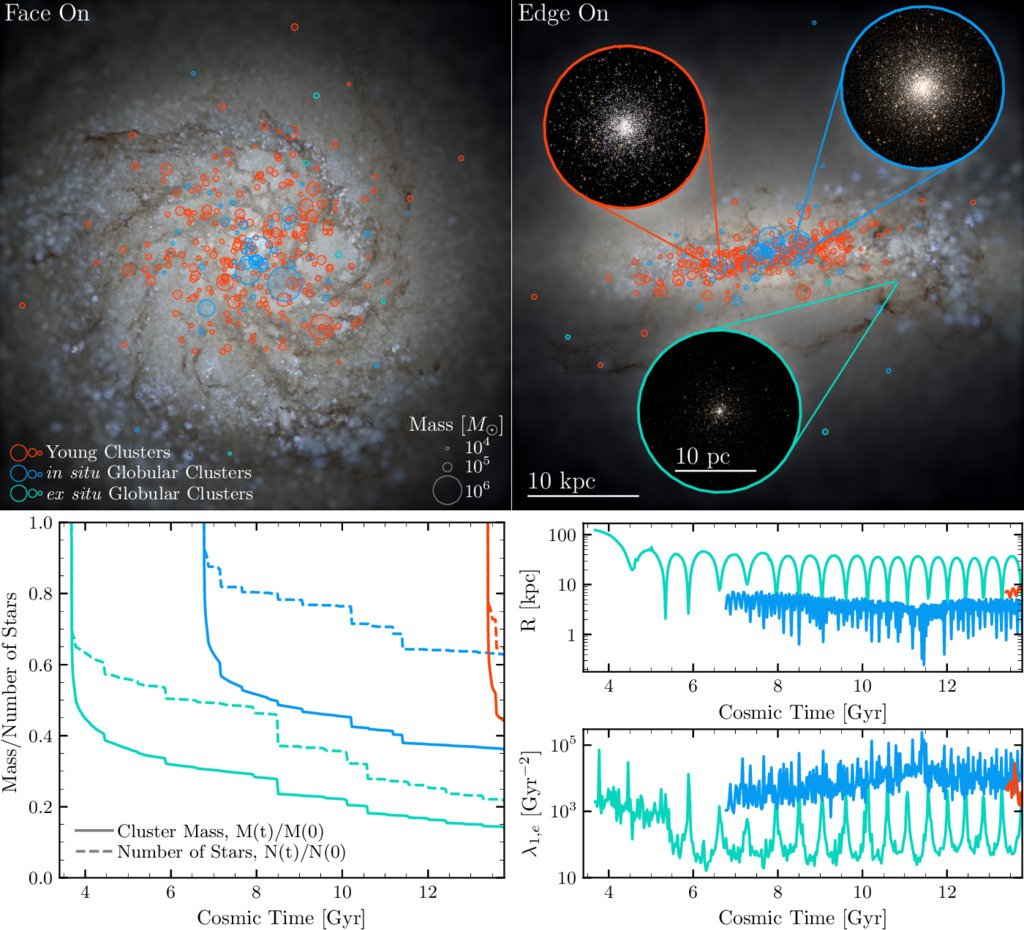The second in our Great Balls of FIRE series, where we (me, Mike Grudić, Zach Hafen, and Astrid Lamberts study the formation and evolution of globular clusters in a realistic MHD galaxy simulation.

This is the second paper in a series. The first paper in the series identified all the clusters that formed over the history of an MHD simulation of a Milky Way-mass galaxy (the m12i FIRE-2 galaxy), and using detailed simulations of collapsing molecular clouds, mapped them to a catalog of young cluster masses, radii, metallicities, etc.
This paper takes the next step: integrating ~1000 of the most massive clusters (10^5 to 10^7 stars) in the catalog forward using our Hénon-style N-body code to the present day, with the initial conditions and tidal fields taken directly from the galaxy simulation. This is, to my knowledge, the first study of it’s kind using a star-by-star N-body approach that can integrate clusters massive enough to become the old globular clusters we see in the MW and other galaxies. The model predicts about 148 GCs in the m12i galaxy at z=0 (compared to ~160 in the Milky Way):

Because we’re using realistic star cluster models, we can extract v-band surface brightness profiles, fit them to King 1966 models like observers do, and directly compare them to the properties of GCs in the MW and M31. Here, we show the masses and radii of our clusters.

Our clusters are typically smaller (in both core radius and mass) than GCs in the MW and M31. This turns out to be related to the specific formation history of the host galaxy. It turns out that clusters born later tend to lose mass more quickly. At the same time, forming GCs later means they form at higher metallicities, and retain fewer stellar mass black holes due to natal kicks. This means they undergo core collapse FASTER than older, metal pool GCs. There is a LOT more information and analysis in the paper, mapping out how exactly the history of this galaxy shapes its z=0 GC population, so I encourage you to take a look!